White cast iron sinks are renowned for their durability and timeless aesthetic, making them a popular choice for kitchens and bathrooms alike. However, maintaining the pristine condition of these sinks can be a challenge, especially with the inevitable wear and tear of daily use. Stains, scratches, and the loss of that initial gleam can make your sink look older than it actually is.
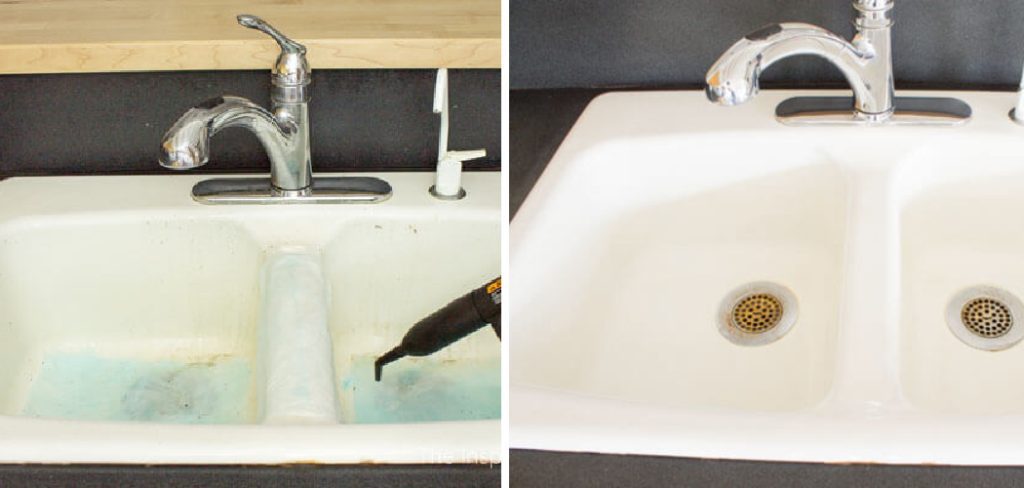
This guide on how to clean white cast iron sink is designed to introduce you to effective and safe methods for cleaning your white cast iron sink, ensuring it remains a sparkling focal point in your home. From simple daily maintenance tips to deeper cleaning techniques, we’ll cover everything you need to keep your sink looking its best.
Understanding White Cast Iron Sinks
Before diving into the cleaning process, it is important to understand the material of your sink. White cast iron sinks are made from a combination of iron, carbon, and silicon, making them extremely durable and resistant to heat and impact.
The surface of these sinks is coated with porcelain enamel, which gives them a smooth and glossy finish. This coating also makes them non-porous, preventing stains and bacteria from penetrating the surface.
You may also come across white cast iron sinks that are coated with acrylic or enamel paint. While these coatings serve the same purpose as porcelain enamel, they are not as durable and may require more delicate cleaning methods.
Why is It Important to Understand the Material of Your Sink?
Well, different materials require different cleaning techniques. For example, while abrasive cleaners may be suitable for porcelain enamel sinks, they can cause damage to acrylic or enamel paint coatings. So before you start cleaning your white cast iron sink, make sure you know what type of coating it has.

You should also take into consideration the age and condition of your sink. Older sinks may have worn-out or chipped enamel, which can make them more susceptible to stains and scratches. In such cases, it is important to be gentle while cleaning to avoid further damage.
Needed Materials
Mild Dish Soap:
Using a mild dish soap is the safest and most effective way to clean your white cast iron sink. Look for a soap that does not contain harsh chemicals or abrasives, as they can damage the porcelain enamel coating.
White Vinegar:
White vinegar is an excellent natural cleaner that can effectively remove stains and grime from your sink without damaging the porcelain enamel. It also helps in deodorizing and disinfecting your sink.
Baking Soda:
Baking soda is a gentle abrasive that can help remove tough stains and grime from your sink without causing damage. It also has natural deodorizing properties, making it an ideal option for cleaning sinks.
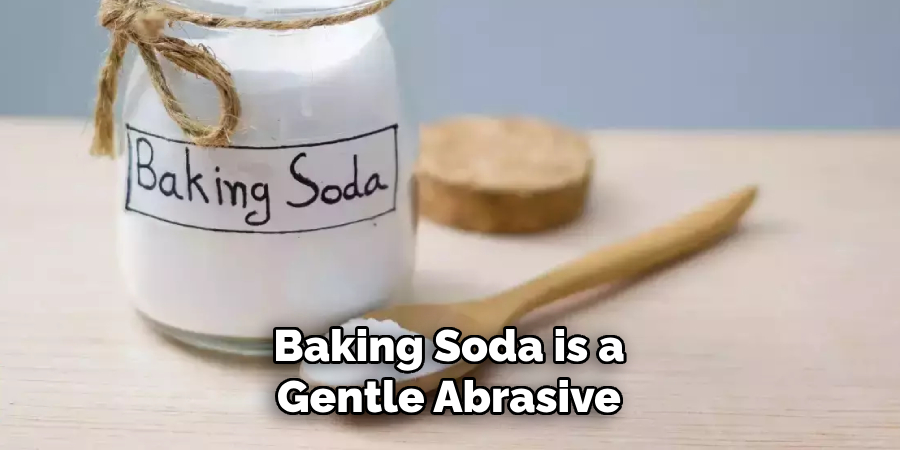
Soft Sponge or Cloth:
When it comes to cleaning white cast iron sinks, using a soft sponge or cloth is crucial. Avoid using steel wool or other abrasive materials as they can scratch the surface of your sink.
Optional Materials:
Lemon:
Lemon juice is a natural bleaching agent and can help remove tough stains from your sink.
Hydrogen Peroxide:
This household cleaner can also be used to remove tougher stains and disinfect your sink.
Non-abrasive Cleaner:
If you have a sink with an acrylic or enamel paint coating, make sure to use a non-abrasive cleaner specifically designed for these types of sinks.
11 Step-by-step Guidelines on How to Clean White Cast Iron Sink
Step 1: Prepare the Sink
Before starting the cleaning process, remove any dishes or debris from your sink. Then rinse it with warm water to remove any loose dirt and grime. Warm water also helps loosen any tough stains. But be careful not to leave your sink wet as it can cause rusting. You can use a clean cloth to dry the sink.
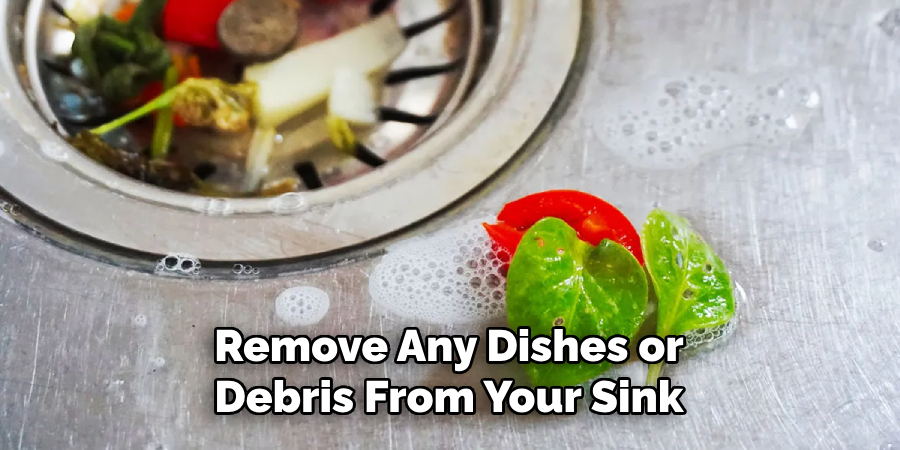
It is recommended to keep a separate cloth for drying your sink to avoid any cross-contamination from other surfaces. It is also important to wear gloves while cleaning to protect your hands from any harsh chemicals.
Step 2: Prepare the Cleaning Solution
In a bowl, mix equal parts of mild dish soap and warm water. You can also add a few drops of white vinegar for extra cleaning power. If you have an acrylic or enamel paint coated sink, make sure to use a non-abrasive cleaner specifically designed for these types of sinks. But if you have a porcelain enamel sink, using this mild dish soap and vinegar solution is safe and effective.
The vinegar helps in removing any hard water stains and soap residue from your sink.
Step 3: Apply the Cleaning Solution
Dip your sponge or cloth into the cleaning solution and gently scrub your sink in circular motions. Make sure to cover all areas, including the faucet, drain, and corners of the sink. For tougher stains, leave the solution on for a few minutes before scrubbing.
Also, be gentle while scrubbing to avoid any scratches. It is recommended to start from the top of the sink and work your way down.
Step 4: Rinse Thoroughly
Once you have scrubbed the entire sink, rinse it thoroughly with warm water. Make sure to remove all traces of the cleaning solution as it can leave a film on your sink if not rinsed properly. You can also use a clean cloth or sponge to help remove the cleaning solution. You may need to rinse a few times to ensure all the soap residue is gone.
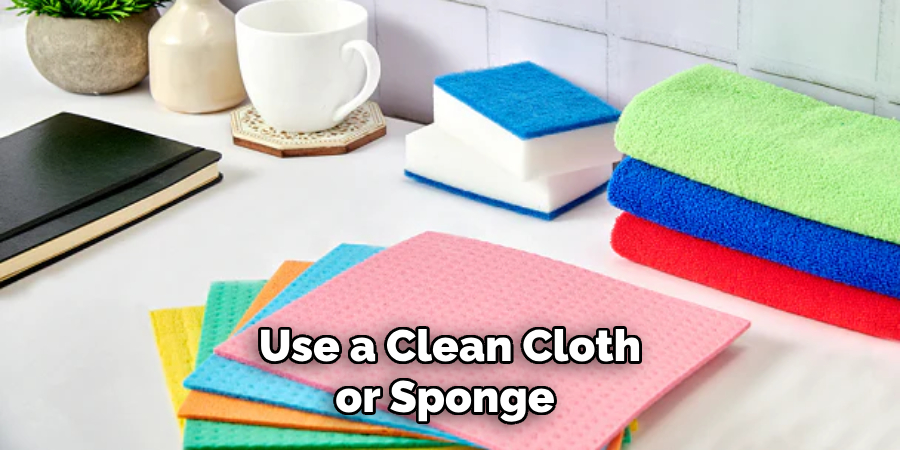
It is essential to properly rinse your sink as any leftover soap or vinegar can cause damage over time.
Step 5: Wipe Down the Sink
Using a clean, dry cloth or paper towel, wipe down your sink to remove excess moisture. This helps prevent water spots from forming on your sink and keeps it looking shiny. The cloth should be soft and non-abrasive to avoid any scratches.
But if you do notice any scratches, you can use a porcelain repair kit to fix them. You can also use a hairdryer on a low setting to dry any hard-to-reach areas.
Step 6: Tackle Tough Stains
For tougher stains or stubborn grime, you can use baking soda. Sprinkle a small amount of baking soda on the stained area and scrub gently with a soft sponge or cloth. Baking soda is a gentle abrasive that can help remove stains without damaging the enamel coating. It is important to be gentle while scrubbing to avoid any scratches.
Step 7: Rinse Again
After using baking soda, make sure to rinse your sink thoroughly with warm water. You can also use a clean cloth or sponge to help remove any residue. Again, it may take a few rinses to ensure all the baking soda is removed. But it is important to make sure there are no traces of baking soda left on your sink as it can cause damage over time.
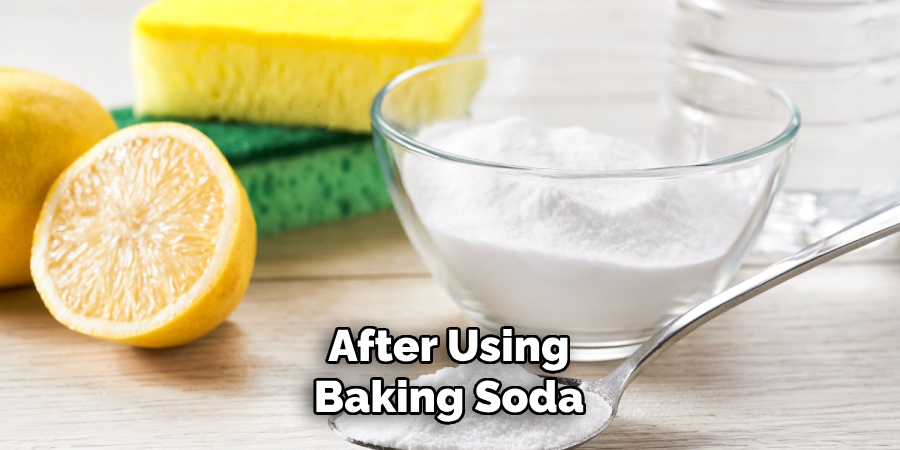
The sink should be completely clean and shiny after rinsing. The warm water also helps in removing any remaining baking soda residue.
Step 8: Deodorize and Disinfect
To deodorize and disinfect your sink, you can use white vinegar. Pour a small amount of vinegar into the drain and let it sit for a few minutes before rinsing with warm water. You can also use a spray bottle to mist the entire sink with vinegar and then rinse with warm water. The vinegar helps in neutralizing any odors and disinfecting your sink.
Step 9: Dry Thoroughly
After cleaning, make sure to dry your sink thoroughly to prevent any rusting or water spots from forming. Again, you can use a clean cloth or paper towel to dry the sink. It is essential to keep your sink dry to maintain its shine and prevent any damage.
Drying your sink after each use is also recommended to prevent water spots. The longer water sits on your sink, the more it can damage the enamel coating.
Step 10: Polish (optional)
If you want to give your sink an extra shine, you can use a porcelain enamel polish. Follow the instructions on the product and apply it using a soft cloth. Make sure to buff the sink after applying the polish for a shiny finish.
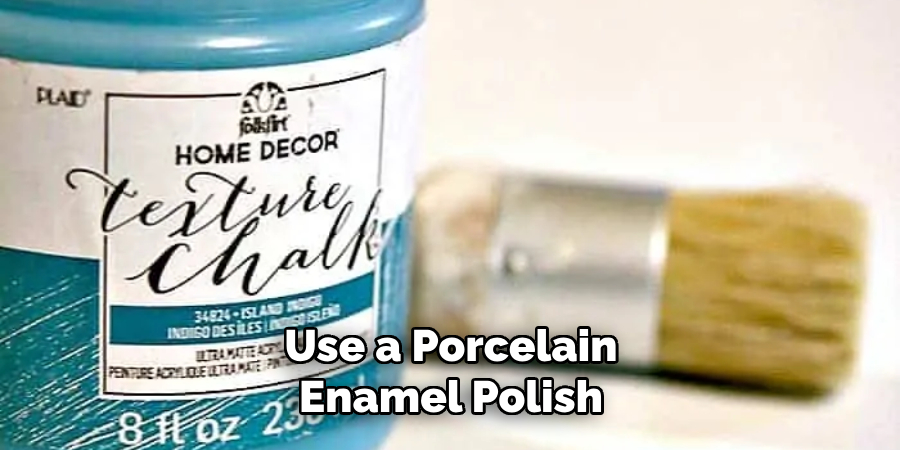
This step is optional and can be skipped if you are satisfied with the shine of your sink after cleaning. But for those who want a truly sparkling sink, this is an additional step to consider.
Step 11: Maintain Regular Cleaning Routine
To keep your white cast iron sink looking clean and shiny, it is important to maintain a regular cleaning routine. You can follow these steps at least once a week to keep your sink in top condition. It is also recommended to clean any spills or stains as soon as they happen to prevent them from setting into the enamel coating.
By following these step-by-step guidelines on how to clean white cast iron sink, you can ensure that your white cast iron sink remains sparkling clean and free of any stains or grime. With regular care and maintenance, your sink will continue to be a shining centerpiece in your kitchen for years to come.
And by using natural, non-toxic cleaning solutions, you can also ensure the safety of your family and the environment. So, if you have a white cast iron sink in your home, don’t let tough stains or grime bring it down.
Troubleshooting Common Issues
Although cleaning your white cast iron sink regularly can help prevent most issues, there may be some common problems that you might encounter. Here are some tips for troubleshooting and fixing these issues:
Rust Spots:
If you notice rust spots on your sink, it is important to address them immediately. You can use a rust remover specifically designed for porcelain or enamel surfaces. Make sure to follow the instructions carefully and rinse thoroughly after use.
Scratches:
If you notice scratches on your sink, you can use a porcelain repair kit to fix them. Make sure to choose a repair kit that matches the color of your sink and follow the instructions carefully. You can also prevent scratches by using non-abrasive cleaning tools and being gentle while scrubbing.
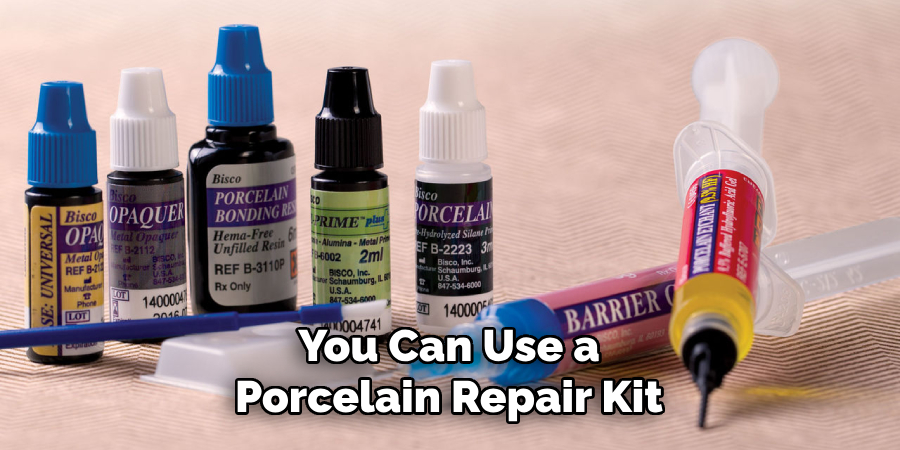
Stains:
For tough stains, you can use a mixture of baking soda and water to create a paste. Apply the paste to the stained area and let it sit for a few minutes before scrubbing gently with a soft cloth or sponge. You may need to repeat this process multiple times for stubborn stains. Make sure to rinse thoroughly afterward.
Dullness:
If you notice your sink has lost its shine, you can use a porcelain enamel polish to restore its luster. Make sure to follow the instructions on the product carefully and buff the sink after applying the polish for best results.
By following these troubleshooting tips, you can easily address common issues and keep your white cast iron sink looking like new. With proper care and maintenance, your sink will continue to be a beautiful and functional addition to your kitchen.
So don’t let any common issues discourage you from choosing a white cast iron sink for your home. With the right cleaning routine and solutions, you can enjoy a sparkling clean sink for years to come. So go ahead and give your white cast iron sink the love and care it deserves! Happy cleaning!
Additional Tips
- Avoid using harsh chemicals or abrasive tools to clean your sink as they can damage the enamel coating.
- Always rinse your sink thoroughly after cleaning to prevent any residue from causing damage over time.
- Use a strainer in your sink drain to catch any food particles and prevent clogs.
- Wipe down the sink after each use to prevent water spots and maintain its shine.
- For tough stains or grime, you can also use a mixture of vinegar and baking soda as a natural cleaning solution.
- Regularly check for any leaks or damage to your sink and address them immediately to prevent further issues.
How Much Will It Cost?
The cost of cleaning a white cast iron sink will depend on the materials you use. If you opt for natural and non-toxic solutions, it can be relatively inexpensive.
For example, baking soda and vinegar are affordable household items that can be used to clean your sink effectively. However, if you choose to purchase specialized cleaning products or tools, it may add to the overall cost.
Overall, maintaining a clean and shiny white cast iron sink can be budget-friendly with the right cleaning routine and products. So don’t let cost discourage you from choosing this classic and durable sink material for your kitchen. It’s an investment that will pay off in the long run with proper care and maintenance.
Frequently Asked Questions
Q: Can I Use Bleach to Clean My White Cast Iron Sink?
A: It is not recommended to use bleach on a white cast iron sink as it can damage the enamel coating. Stick to natural and non-toxic solutions for best results.
You can also consult the manufacturer’s instructions for any approved cleaning products. But as a general rule, avoid using harsh chemicals on your sink. It’s better to be safe than sorry.
Q: My Sink Has Yellow Stain. What Should I Do?
A: Yellow stains on a white sink can be caused by minerals in the water or from certain foods or beverages. You can use a mixture of lemon juice and baking soda to create a paste and apply it to the stained area for a few minutes before scrubbing gently with a soft cloth or sponge. Rinse thoroughly afterward.
If the stains persist, you can also try using a porcelain cleaner or contacting the manufacturer for further advice.
Q: Can I Use Steel Wool or Abrasive Sponges to Clean My White Cast Iron Sink?
A: No, it is not recommended to use steel wool or abrasive sponges on a white cast iron sink as they can scratch and damage the enamel coating.
Stick to non-abrasive cleaning tools for best results. You can also use a soft-bristled brush or toothbrush for tougher stains. But always be gentle and avoid using excessive force while scrubbing. It’s better to take a little more time and care than risk damaging your sink.
Q: What Should I Do If My Sink Starts to Chip or Crack?
A: If you notice any chips or cracks on your sink, it is important to address them immediately. You can use a porcelain repair kit to fix small damages. However, for larger or more extensive damage, it may be best to contact the manufacturer for guidance on how to proceed.
Regularly checking for any potential issues and addressing them promptly can help prevent them from worsening and potentially causing more costly repairs in the future. So, make sure to keep an eye on your sink’s condition and act accordingly.
Conclusion
In conclusion, white cast iron sinks are a classic and durable choice for any kitchen. With proper care and maintenance, they can remain beautiful and functional for years to come. By following the troubleshooting tips and additional suggestions provided in this guide on how to clean white cast iron sink, you can easily address common issues and keep your sink looking like new.
Remember to be gentle while cleaning, avoid harsh chemicals, and regularly check for any damage or leakage to ensure the longevity of your white cast iron sink. Happy cleaning! So go ahead and choose this timeless sink material for your kitchen and enjoy its benefits for many years to come.

